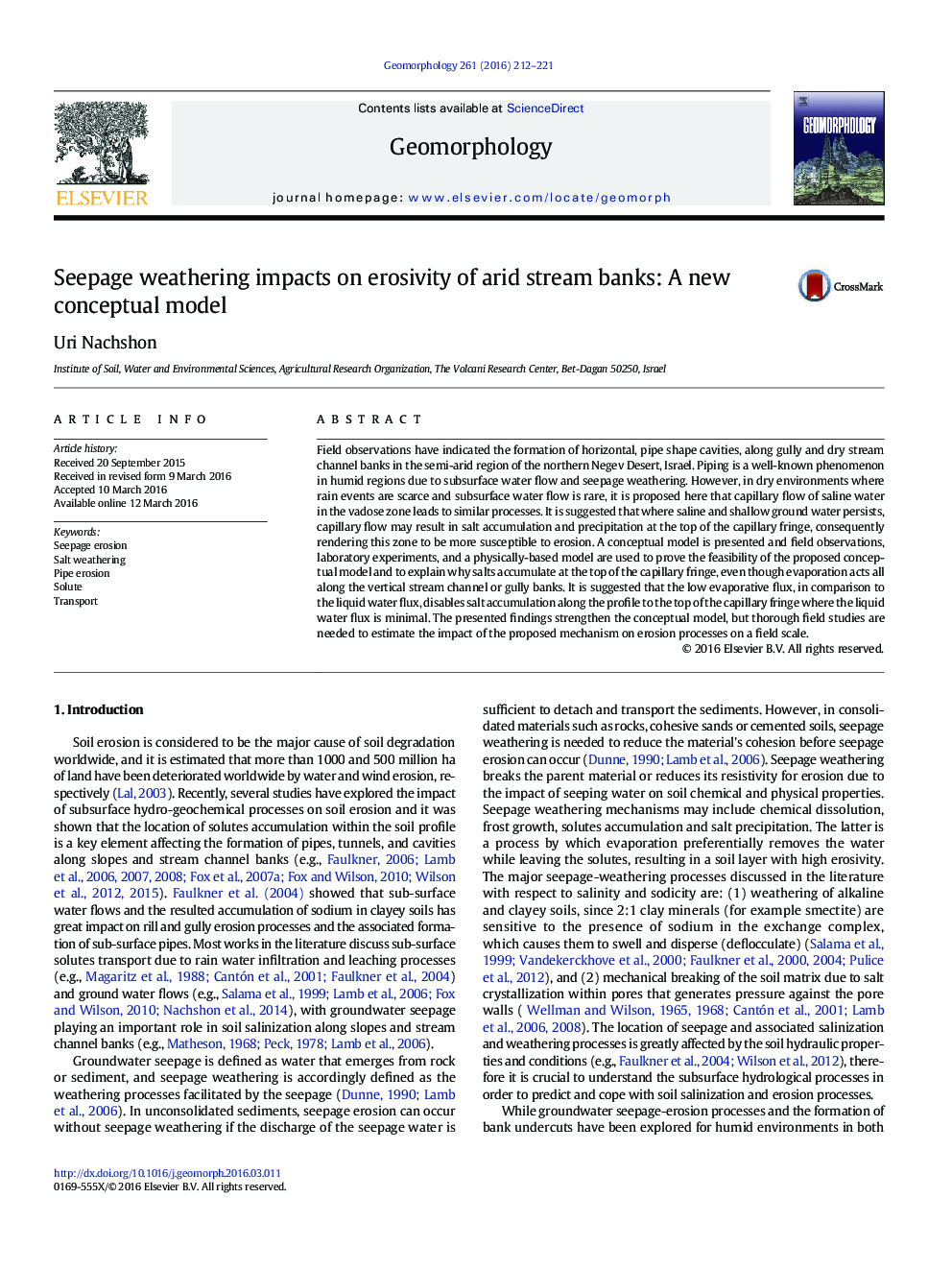| Article ID | Journal | Published Year | Pages | File Type |
|---|---|---|---|---|
| 4684058 | Geomorphology | 2016 | 10 Pages |
•New conceptual model is being proposed to explain seepage weathering at dry stream channels.•Strong association is found between salt accumulation and erosion along dry stream channel banks.•Capillary rise from shallow and saline groundwater leads to soil salinization and weathering.•Salt accumulates on top of capillary fringe.
Field observations have indicated the formation of horizontal, pipe shape cavities, along gully and dry stream channel banks in the semi-arid region of the northern Negev Desert, Israel. Piping is a well-known phenomenon in humid regions due to subsurface water flow and seepage weathering. However, in dry environments where rain events are scarce and subsurface water flow is rare, it is proposed here that capillary flow of saline water in the vadose zone leads to similar processes. It is suggested that where saline and shallow ground water persists, capillary flow may result in salt accumulation and precipitation at the top of the capillary fringe, consequently rendering this zone to be more susceptible to erosion. A conceptual model is presented and field observations, laboratory experiments, and a physically-based model are used to prove the feasibility of the proposed conceptual model and to explain why salts accumulate at the top of the capillary fringe, even though evaporation acts all along the vertical stream channel or gully banks. It is suggested that the low evaporative flux, in comparison to the liquid water flux, disables salt accumulation along the profile to the top of the capillary fringe where the liquid water flux is minimal. The presented findings strengthen the conceptual model, but thorough field studies are needed to estimate the impact of the proposed mechanism on erosion processes on a field scale.
